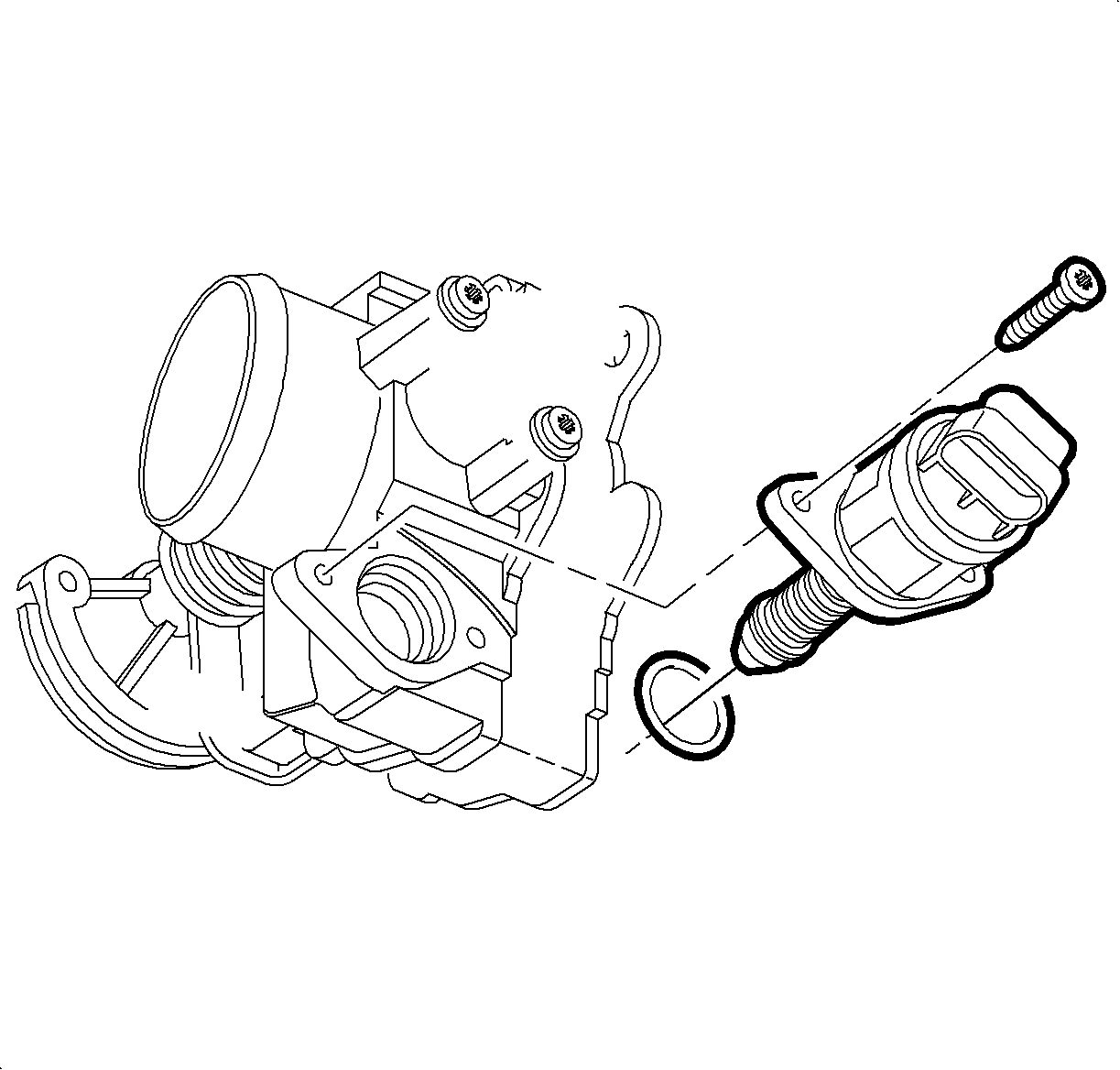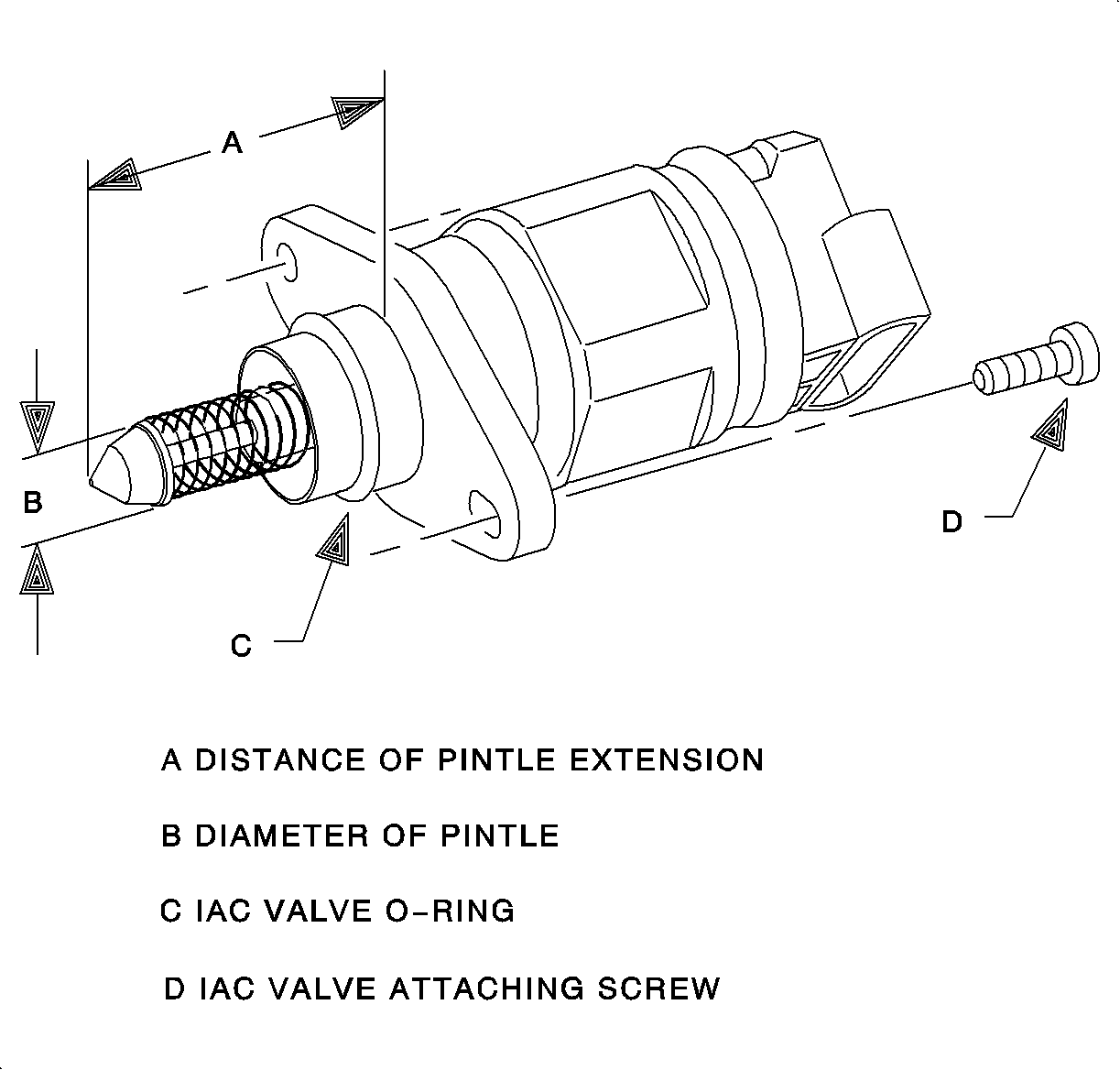Removal Procedure
- Turn the ignition OFF.
- Remove the air induction tubing from the throttle body to the air cleaner.
- Disconnect the IAC valve harness connector.
- Disconnect the throttle position (TP) sensor harness connector.
- Disconnect the manifold absolute pressure (MAP) sensor harness connector.
- Remove the IAC valve attachment screws and IAC valve.
- Remove the O-ring from the IAC valve and discard.

Notice: The IAC valve is an electrical component and must not be soaked in any liquid solvent, otherwise damage could result.
Installation Procedure
- Clean the IAC valve seating surfaces on the throttle body to assure proper seal of the new O-ring and contact of the IAC valve flange.
- Lubricate the new O-ring with clean engine oil and install on the IAC valve.
- Insert the IAC valve in the throttle body.
- Install the IAC valve attachment screws using thread coating, Saturn P/N 21485277 (LOCTITE 242® Threadlocker or equivalent).
- Connect the IAC valve harness connector. Push in the connector until a click is heard and pull back to confirm a positive engagement.
- Connect the MAP sensor harness connector. Push in the connector until a click is heard and pull back to confirm a positive engagement.
- Connect the TP sensor harness connector. Push in the connector until a click is heard and pull back to confirm a positive engagement.
- Install the air induction tubing from the throttle body to the air cleaner.

Important: Before installing a new IAC valve, retract the pintle using the scan tool. Refer to the scan tool user guide.
Important: Normal wear of the IAC pintle, characterized by a ring around the cone, is not an indication of a bad IAC valve.

Important: If replacement is necessary, be sure to replace with an identical part. IAC valve pintle shape and diameter are designed for specific applications.
Notice: Use the correct fastener in the correct location. Replacement fasteners must be the correct part number for that application. Fasteners requiring replacement or fasteners requiring the use of thread locking compound or sealant are identified in the service procedure. Do not use paints, lubricants, or corrosion inhibitors on fasteners or fastener joint surfaces unless specified. These coatings affect fastener torque and joint clamping force and may damage the fastener. Use the correct tightening sequence and specifications when installing fasteners in order to avoid damage to parts and systems.
Tighten
Tighten the idle air control valve to 3 N·m (27 lb in).
Important: The powertrain control module (PCM) will have to go through an IAC relearn process once the new valve is installed. The vehicle should be run at normal operating temperature while varying the engine RPM slowly between 3,500 RPM and idle 2 or 3 times.
